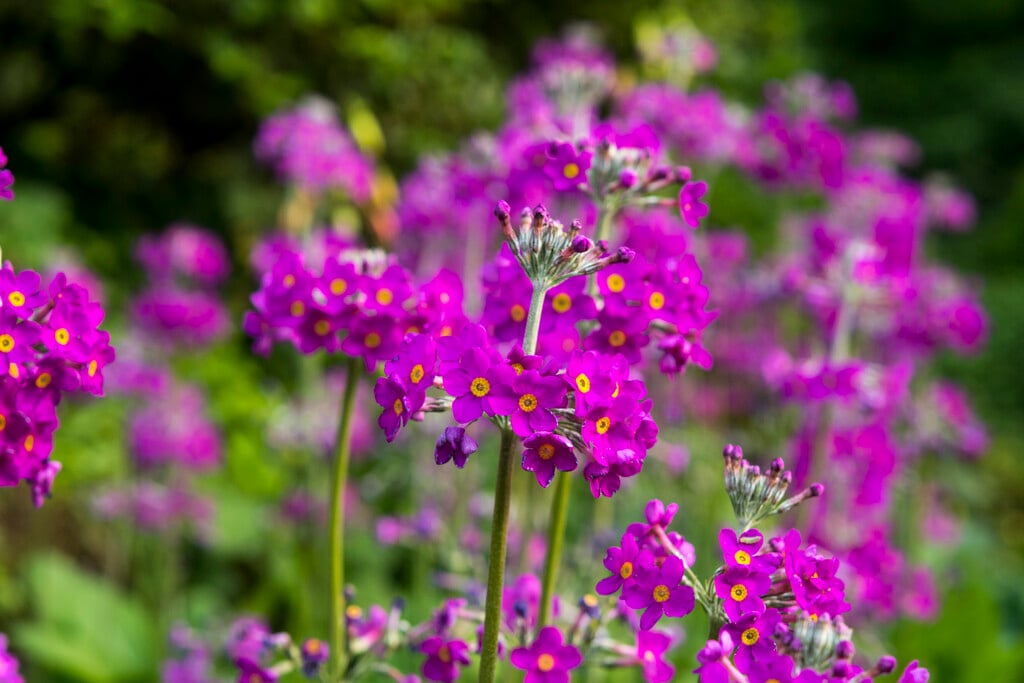Size
Ultimate height
0.1–0.5 metresTime to ultimate height
2–5 yearsUltimate spread
0.1–0.5 metresGrowing conditions
Moisture
Moist but well–drained, Poorly–drainedpH
Acid, NeutralColour & scent
| Stem | Flower | Foliage | Fruit | |
| Spring | Purple | Green | ||
|---|---|---|---|---|
| Summer | Purple | Green | ||
| Autumn | ||||
| Winter |
Position
- Full sun
- Partial shade
Aspect
North–facing or East–facing or South–facing or West–facing
Exposure
Sheltered Hardiness
H6Botanical details
- Family
- Primulaceae
- Native to GB / Ireland
- No
- Foliage
- Deciduous
- Habit
- Bushy
- Genus
Primula are herbaceous or semi-evergreen perennials, forming a basal rosette of simple leaves, with salver-shaped or bell-shaped flowers which may be solitary or carried in an umbel or in whorls on an erect stem
- Name status
Correct
- Horticultural Group
- Proliferae section primulas are moisture-loving herbaceous or semi-evergreen perennials forming a rosette of basal leaves, with erect stems each carrying several whorls of salver-shaped flowers
- Plant range
- W China
How to grow
Cultivation
Grow in partial shade, in deep, humus-rich, moist, neutral to acid loam soil, or naturally peaty soil. Tolerates full sun if soil remains moist at all times
Propagation
Propagate by seed sown in containers in an open frame, as soon as ripe or in late winter or early spring. Divide between autumn and early spring. Root basal cutting or offsets in autumn or early spring. Take root cuttings when dormant in winter
Suggested planting locations and garden types
- Cottage and informal garden
- Flower borders and beds
Pruning
No pruning required
Pests
May be susceptible to aphids, glasshouse red spider mite, leaf hoppers, vine weevil, slugs
Diseases
May suffer from a virus, primula brown core and grey mould (botrytis)
Love gardening
Sign up to receive regular gardening tips, inspiration, offers and more
View our Privacy Policy
Get involved
The Royal Horticultural Society is the UK’s leading gardening charity. We aim to enrich everyone’s life through plants, and make the UK a greener and more beautiful place.

